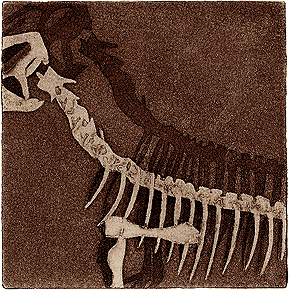Man With a Mission
Miyazawa Kenji threw himself into nature, not content to sit on the sidelines squinting and sighing over human resignation. He could not separate himself from what he observed, and felt it his duty to teach others to take robust action out of religious conviction. For these reasons, if for no others, he suffered the fate of being the most misunderstood Japanese literary figure of the 20th century.
In 1996, however, as if to redress a balance, the work of Miyazawa Kenji received unprecedented attention in the media. Hardly a day went by when someone didn't write about him in a national newspaper or magazine, or sing his praises on radio. There were, in the first half of the year alone, three lengthy television docudramas about his life and writing, and two feature films went into production. Another feature, animated, is in production for release in 1997.
No author, living or dead, has ever received such concentrated attention. A full 63 years after his death, Miyazawa Kenji has miraculously come up in the world, hauled up rank by rank in the literary six states of existence from somewhere in semi-honorary limbo to heights of esteem bordering on supreme bliss.
What has prompted this turnabout? Is Miyazawa being made a saint, the holy man from Hanamaki? Is this a genuine interest, shared by the reading public and reflected properly in the media? Will the adulation last?
During Miyazawa's lifetime--1896-1933--the people of Iwate Prefecture, in the Tohoku region, struggled on the fringes of subsistence. Japan's development has always been sporadic. In the Meiji Era (1868-1912), wealth gravitated to the major ports that emerged from feudalistic practices, both civic and economic, as the nation settled, not without considerable social upheaval, into the customs of modernization.
 In many rural areas, however, farmers found themselves pushed back. Traditional social organizations did not always prepare them well for more efficient new farming methods. And, as in Iwate, their lack of easy access to international ports such as Yokohama and Kobe, from which the Kanto and Kansai regions drew their bounty, prevented them from acquiring both the means and the information necessary to keep pace. Destitution forced men from the Tohoku area to go primarily to Tokyo to work, through the gateway of Ueno. Young girls were sent away to spinning mills, or worse, to brothels. It is said that kokeshi dolls, popular in the northern prefectures of Honshu, were effigies of affection kept by parents and grandparents to remind them of their lost little girls.
In many rural areas, however, farmers found themselves pushed back. Traditional social organizations did not always prepare them well for more efficient new farming methods. And, as in Iwate, their lack of easy access to international ports such as Yokohama and Kobe, from which the Kanto and Kansai regions drew their bounty, prevented them from acquiring both the means and the information necessary to keep pace. Destitution forced men from the Tohoku area to go primarily to Tokyo to work, through the gateway of Ueno. Young girls were sent away to spinning mills, or worse, to brothels. It is said that kokeshi dolls, popular in the northern prefectures of Honshu, were effigies of affection kept by parents and grandparents to remind them of their lost little girls.
Miyazawa Kenji was a rare exception in this environment. Born in Hanamaki as the eldest of five children--two boys and three girls--into a well-to-do family (his father, Masajiro, was the town pawnbroker), Kenji had to watch at close hand as the miserable tenant farmers of the district traded their meager belongings for a pittance.
Years later, he was able, as a trained agronomist, to reestablish ties with the farmers of the area, but it is doubtful whether they truly disassociated him from the professional practices of his father.
By all rights the eldest son should have continued in his father's footsteps. Even in a Japan bent on militarization, eldest sons could be exempted from conscription. Following dutifully in the family line was considered that important. Refusing to do so was a step of major rebellion.
While the good people of Hanamaki some 100 years after Kenji's birth speak well of the Miyazawa family, the Miyazawas were somewhat despised at the time. One cannot help but think that more than a few of the young boy's pangs of conscience came from viewing poor farmers shuffling in and out of his father's pawnshop. He would have to find a way to do something on their behalf, to prove to them that he cared personally about their lot.
|



